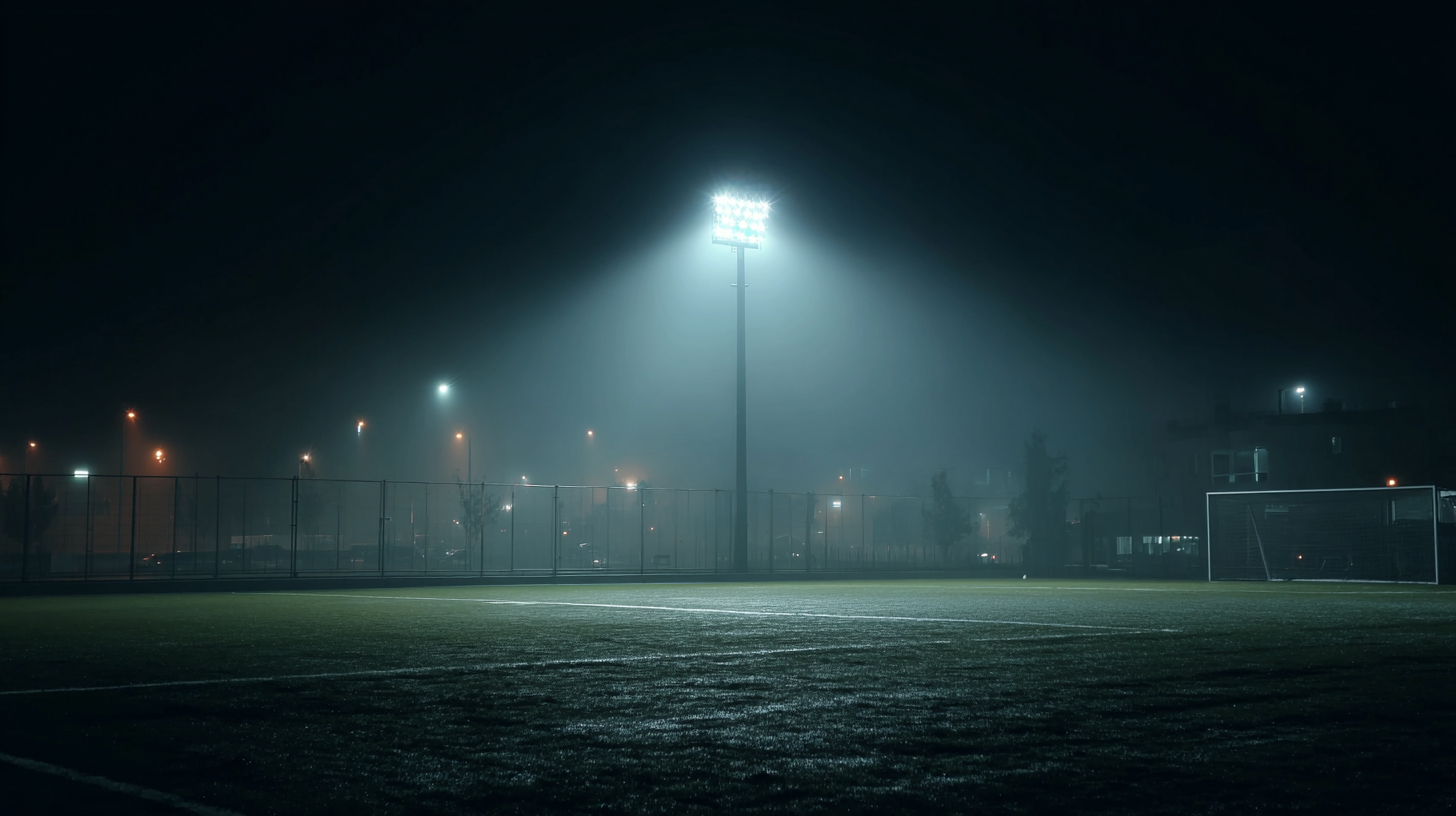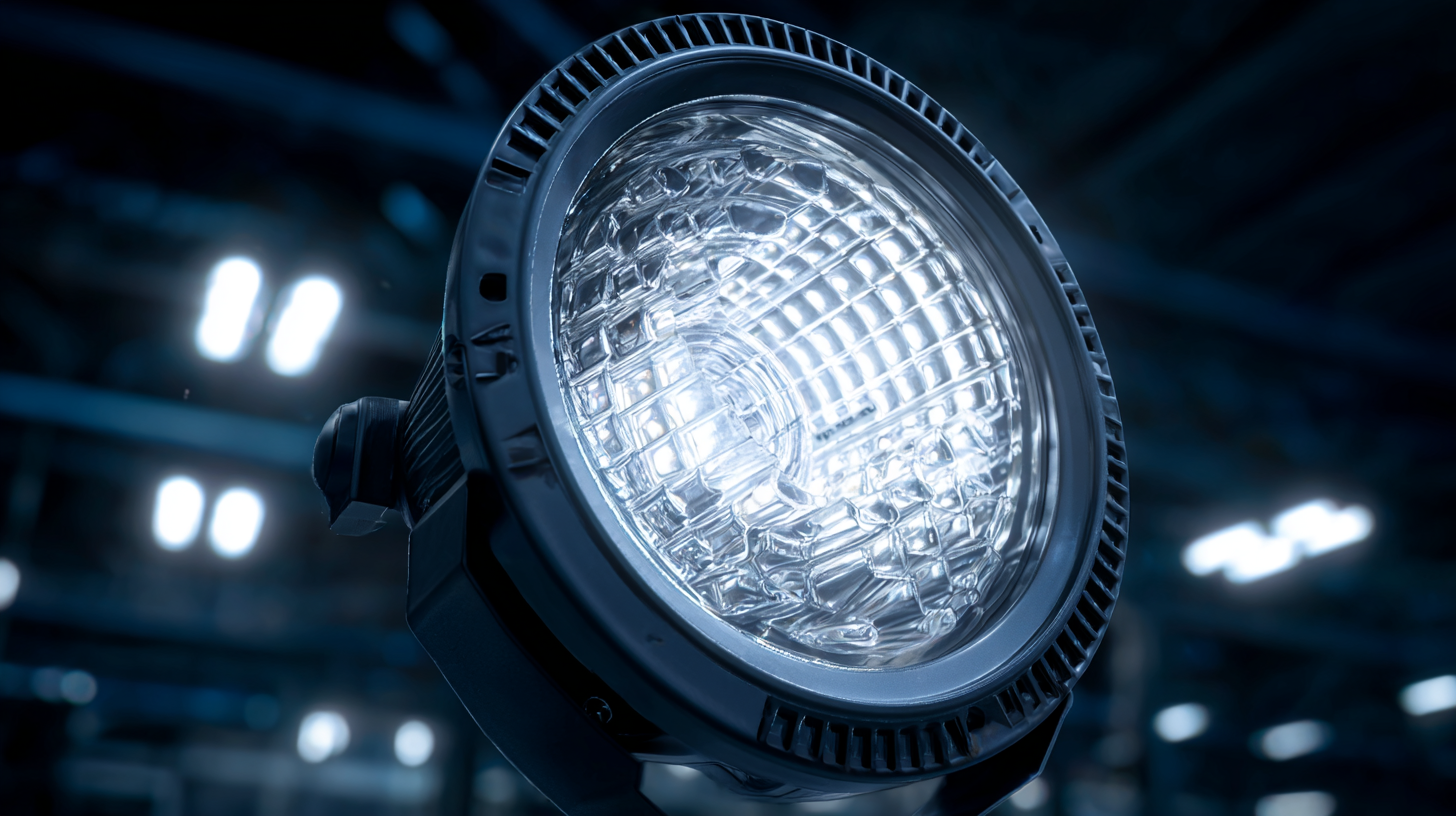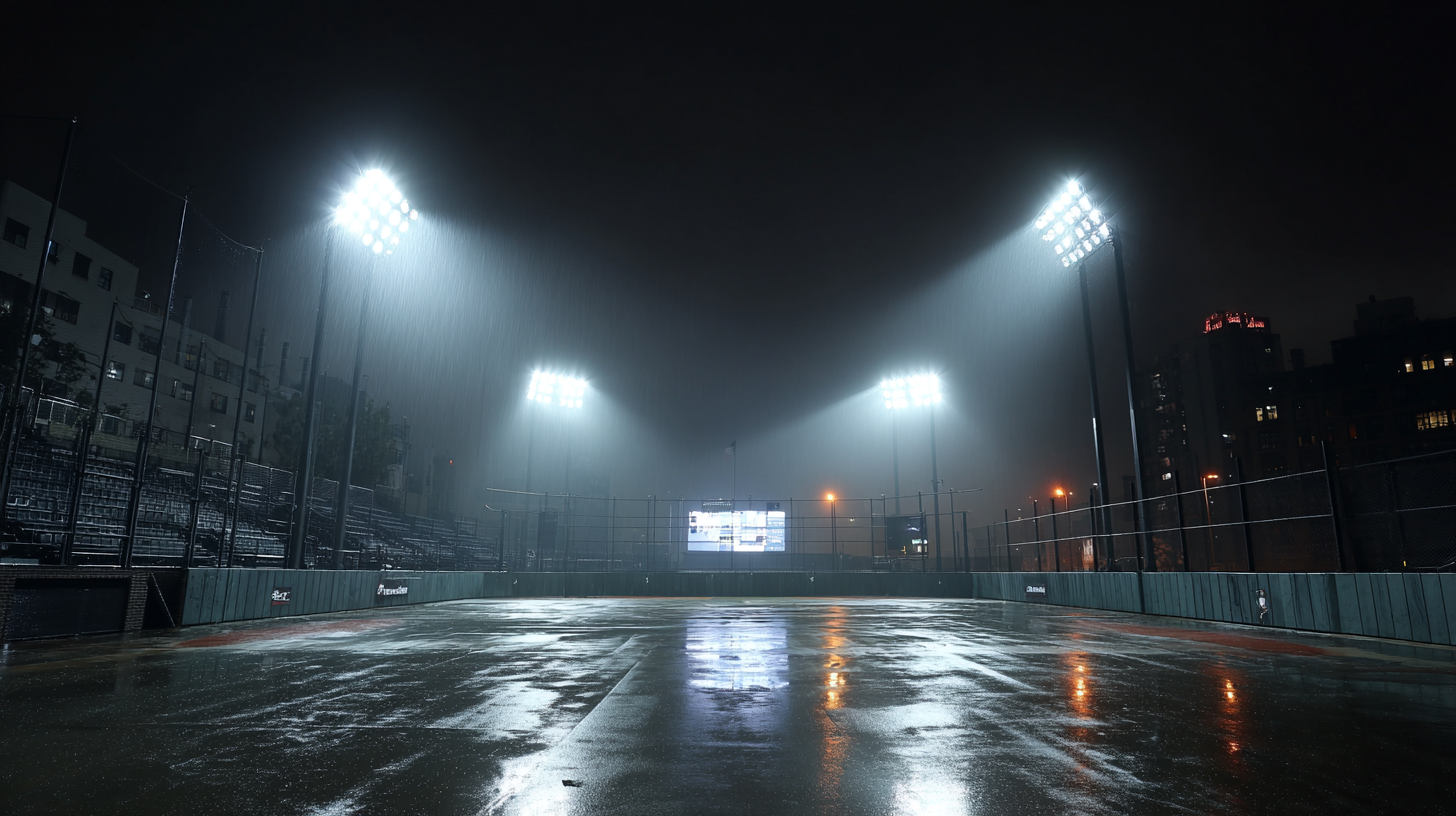Exploring the Distinct Features and Applications of Best Floodlight LED Varieties
In recent years, the adoption of Floodlight LED technology has surged, driven by a growing emphasis on energy efficiency and sustainability in lighting applications. According to a report by the U.S. Department of Energy, LEDs are projected to dominate the lighting market by 2035, accounting for over 60% of the general illumination market. This transition is largely attributed to the remarkable advantages of Floodlight LEDs, such as their extended lifespan, lower energy consumption, and reduced environmental impact compared to traditional lighting solutions. Furthermore, advancements in LED technology have led to a significant improvement in light quality and performance, making them an ideal choice for various applications, including outdoor security, architectural illumination, and recreational facilities. As we delve into the distinct features and applications of the best Floodlight LED varieties, it becomes essential to understand the technical specifications that set them apart in the competitive lighting landscape.

Understanding LED Floodlights: Key Features and Benefits
 LED floodlights have become increasingly popular due to their efficiency and versatility. One of the key features of these lights is their energy-saving capability. Unlike traditional incandescent bulbs, LED floodlights consume significantly less electricity while providing the same, if not greater, illumination. This not only translates into lower energy bills but also contributes to a reduced carbon footprint, making them an environmentally friendly choice. Furthermore, LED floodlights have a longer lifespan, often rated for tens of thousands of hours, which means less frequent replacements and lower maintenance costs over time.
LED floodlights have become increasingly popular due to their efficiency and versatility. One of the key features of these lights is their energy-saving capability. Unlike traditional incandescent bulbs, LED floodlights consume significantly less electricity while providing the same, if not greater, illumination. This not only translates into lower energy bills but also contributes to a reduced carbon footprint, making them an environmentally friendly choice. Furthermore, LED floodlights have a longer lifespan, often rated for tens of thousands of hours, which means less frequent replacements and lower maintenance costs over time.
In addition to energy efficiency, LED floodlights offer versatility in various applications. Whether for residential use, commercial properties, or outdoor events, these lights can adapt to a range of environments. They are ideal for security lighting, illuminating large outdoor areas, or highlighting architectural features. Advanced features such as adjustable brightness and smart technology integration further enhance their functionality, allowing users to tailor their lighting experience. The durability of LED floodlights, with many models designed to withstand harsh weather conditions, ensures that they perform reliably in any setting, providing excellent illumination whenever needed.
Different Types of Floodlight LEDs: A Comprehensive Guide
When it comes to selecting floodlight LEDs, understanding the different types can significantly enhance your experience and satisfaction. Floodlight LEDs are designed for various applications, from outdoor security lighting to illuminating large indoor venues. Among the most common varieties are the traditional floodlights, high bay lights, and adjustable beam floodlights. According to industry reports, high bay LEDs can reduce energy consumption by up to 50% compared to their conventional counterparts, making them a sustainable choice for large spaces.
To optimize your lighting setup, consider the specific needs of your environment. For instance, if you're illuminating an outdoor sports facility, using adjustable beam floodlights allows for versatile lighting angles, ensuring that all areas are adequately lit. Additionally, energy-efficient models not only save on electricity bills but also have longer lifespans, reducing waste.
**Tips:** When installing floodlight LEDs, ensure proper placement to avoid dark spots and maximize coverage. Maintenance is key; clean the fixtures regularly to maintain brightness and efficiency. Lastly, always check for models with energy-saving features, such as motion sensors, which can further enhance sustainability by conserving power when areas are unoccupied.
Exploring the Distinct Features of Best Floodlight LED Varieties
This chart illustrates the lumen output and energy efficiency of various types of floodlight LEDs commonly used in residential and commercial applications.
Application Scenarios for LED Floodlights in Various Settings
 LED floodlights have become increasingly popular in various settings due to their versatility and energy efficiency. These lighting solutions find applications in residential security, commercial establishments, sporting events, and outdoor spaces. With the integration of features like motion detection and cameras, floodlight systems not only illuminate large areas but also serve as effective deterrents against intruders. For instance, the latest models combine bright lighting with surveillance capabilities, ensuring both safety and visibility at night.
LED floodlights have become increasingly popular in various settings due to their versatility and energy efficiency. These lighting solutions find applications in residential security, commercial establishments, sporting events, and outdoor spaces. With the integration of features like motion detection and cameras, floodlight systems not only illuminate large areas but also serve as effective deterrents against intruders. For instance, the latest models combine bright lighting with surveillance capabilities, ensuring both safety and visibility at night.
When selecting floodlights, consider the specific application scenario. For security lighting, look for floodlights equipped with motion sensors and smart connectivity to enhance your surveillance system. In recreational settings, like sports fields, investing in high-quality LED floodlighting can significantly improve safety and visibility for players and spectators alike. According to industry reports, efficient outdoor lighting can reduce energy consumption by up to 80%, making it a practical choice for both home and commercial use.
Tips: Make sure to install floodlights at optimal heights to cover the desired areas effectively. Use timers and smart controls to automate lighting and save energy during off-peak hours. Lastly, always check the wattage and lumens of the floodlight to ensure it meets your brightness needs while being energy efficient.
Energy Efficiency and Sustainability of LED Floodlight Solutions
LED floodlights are revolutionizing the way we illuminate our spaces, providing unparalleled energy efficiency and sustainability. Traditional lighting solutions, such as halogen or incandescent bulbs, consume significantly more power while generating excessive heat. In contrast, LED floodlights operate at lower wattages, delivering the same brightness with a fraction of the energy consumption. This efficiency not only reduces electricity bills but also lessens the overall environmental impact by decreasing the demand for fossil fuels used to generate electricity.
Moreover, the longevity of LED floodlights contributes to their sustainable profile. With lifespans often exceeding 25,000 hours, these lights require less frequent replacement, leading to reduced waste and lower costs over time. Additionally, many LED models are designed with recyclable materials, further minimizing their ecological footprint. As more consumers and businesses prioritize sustainability, the transition to LED floodlight solutions becomes an intelligent choice, ensuring that communities can enjoy bright, efficient lighting while also caring for the planet.
Exploring the Distinct Features and Applications of Best Floodlight LED Varieties
| Floodlight Type | Wattage | Luminous Flux (LM) | Efficiency (LM/W) | Average Lifespan (Hours) | Material | Application |
|---|---|---|---|---|---|---|
| Standard LED Floodlight | 100W | 13000 | 130 | 25000 | Aluminum | Outdoor Lighting |
| Solar LED Floodlight | 50W | 6500 | 130 | 20000 | Plastic/Aluminum | Garden & Pathway Lighting |
| Smart LED Floodlight | 150W | 19500 | 130 | 30000 | Aluminum | Sports Facilities |
| Bi-Color LED Floodlight | 80W | 10400 | 130 | 30000 | Aluminum | Event Lighting |
Tips for Choosing the Right Floodlight LED for Your Needs
When selecting the right floodlight LED for your needs, it’s essential to consider several critical factors to ensure optimal performance. First, determine the brightness you require, typically measured in lumens. According to the U.S. Department of Energy, modern LED floodlights produce between 1,500 to 20,000 lumens, making them suitable for various applications from residential pathways to large commercial spaces. A higher lumen count is ideal for larger areas that require more light, while lower output is sufficient for smaller, confined spaces.
Another important aspect to consider is the color temperature, which affects ambiance and visibility. LEDs are available in a range of color temperatures, typically from warm white (3000K) to daylight (5000K and above). Research from the Lighting Research Center suggests that a color temperature of around 4000K is often ideal for outdoor settings as it enhances visibility while minimizing glare. Additionally, look for energy efficiency ratings; high-quality floodlights often have an efficacy rating exceeding 100 lumens per watt. This metric not only indicates superior performance but also translates into long-term savings on electricity bills. By prioritizing these features, you can choose an LED floodlight that meets your specific requirements while contributing to energy efficiency and safety.

